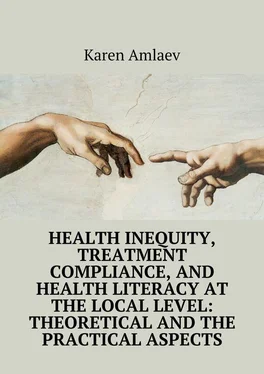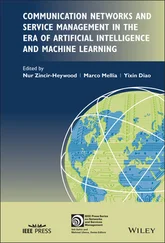3. Sharp increase in inequity in terms of people’s access to medical services, while the majority of these people are socially disadvantaged.
4. Prominent inequity in doctors” incomes.
5. Unequal access to medical services for certain groups of people: homeless people, neglected children, migrants, and just financially vulnerable people.
4. Continuing practice of increasing the share of costly and expensive medicine, a huge gap between the quality and quantity of medical assistance in cities and in the provincial areas, and the gap between the assistance provided to rural and to urban residents is increasing.
5. Obvious and neglected mismatch between people need for preventive medicine, treatment and rehabilitation, and the funding allocated to the area. All this makes medicine spontaneous, paid, creates new issues and even power abuse, which may result in undermining the entire structure of the system. Since recently, instead of improving medical assistance, managers in healthcare have started talking about lifestyles, thus trying to avoid responsibility for current state of things in medicine and shifting it onto people who abuse tobacco, alcohol, stick to unhealthy diets and just do not take care of their own health, even though, actually, all this is one of the tasks for the system of healthcare.
6. Overly complexity of the very system of healthcare and, as a result, its poor controllability and efficiency (Комаров Ю. М., 2010).
Thus, we believe that in order to reduce the urgency of health inequity it takes comprehensive intersectoral measures, which should be initiated by the public health sector, while all the municipal agencies and public groups should be involved as equal partners.
Measures for reducing health inequity
Health inequity determinants lie within areas of public life other than healthcare alone; then it is obvious that there is a need for a policy in all these areas aiming at assessing their impact on health, especially on the health of the most vulnerable groups, which would allow coordinating the policy respectively.
From the viewpoint of social policy, first of all there is a need to realize the scale of the issue. This is why the top aim for a social policy in this area should be activity for, at least, limiting the impact of poverty and income inequity on people’s health.
The Committee for socio-economic determinants recommends the following
– to carry out a quantitative assessment of potential effects on the health of different groups of the population due to particular risk factors;
– to detect the risk factors (including social determinants) whose effect could be prevented;
– to carry out a differentiated analysis of the impact on health that competing risk factors have, e.g. such as tobacco smoking and diet;
– to detect and carry out a deeper analysis of the cumulative effect of multiple impacts;
– to investigate additional and synergetic (or, which is less likely, antagonistic) interaction between socio-economic factors and the negative environmental factors;
– to get to deeper understanding of the nature and gender differences in the vulnerability of children, older people and the elderly to negative environmental effects (CSDH, 2009).
The countries looking for counter-measures in order to reduce social and environmental inequities should take into account their driving forces and the underlying reasons. No doubt, there are no easy ways to eliminate the inequities, proof to that being the social processes that have been going on in the latest decades. The key to success of the strategies that are being implemented is a clear division between short– and long-term objectives, and reducing socially determined environmental issues takes various approaches.
?In the long-term outlook disadvantaged groups will gain the maximum benefit from interventions aiming at creating a safer environment just because these groups are more often subject to negative environmental impact.
?The long-term measures that should be part of the local, national, and international agenda must include special events and campaigns aiming at serving the groups with the detected risk of the most serious or specific unfavorable effects of environmental inequity.
Since poverty is one of the key factors determining health inequity, this inequity cannot be resolved unless this key issue is resolved.
The major stream in overcoming absolute poverty is ensuring productive employment, increasing labor efficiency, creating conditions allowing the working population earning more thus supporting themselves and their families.
In this case the size of the salary comes out as the major guarantee against poverty. The role of the state here implies establishing market conditions for increased competitive capacity in the national economy through increased competitive capacity of the Russian enterprises – implementing the required industrial policy, proper adjustment of the system for staff training, introducing measures for supporting the national manufacturer.
Higher selectivity in offering social assistance, application-based priority, and individual social benefits – all these make up an efficient way of eliminating poverty.
When selecting socially vulnerable groups there is a need to match the officially established poverty line with their income, the officially established minimum property standard with the property that they possess. Special attention should be paid here to the issue of homelessness, neglected children, and children in crisis families.
An important task for social policy is detecting the obstacles on the way to obtaining social support and benefits.
The current system for revealing and supporting poor families and people providing them with various benefits, advantages, sand other types of assistance is far from being perfect and needs adjustment to market economy. The funding allocated nowadays to provide social support to the poor is not efficiently distributed and will often go to the families that are poor indeed. As a result the truly poorest population remains even in worse condition.
The international practice includes the following measures to combat poverty:
– Redistribution of income.
First of all there should be measures for the development of an efficient labor market. This issue implies resolving two key tasks:
– Measures for reducing the number of low-paid employees;
In the major measures aiming at the reduction of the number of low-paid employees the following can be defined:
– Increased salaries for public employees through bringing up the expenses for remuneration of labor;
– Implementing a policy aiming at reducing illegal types of labor remuneration, which contributes to impoverishment of the working population (delayed pay, payment in kind). Such a policy must include economic and administrative measures targeting, first of all, the employer;
– Encouraging employment for those who want and can work, new workplace establishment. To ensure prompt the establishment of new workplaces takes stimulating the priority in the development of the economic areas that can provide new workplaces with minimum investment. This is, first of all, small– and middle-scale business.
– measures for reducing income inequity at the expense of social transfers and increased minimum guarantees in social security sphere;
– introducing a progressive income tax for individuals. Officially the gap between the 10 % of the poorest and the richest is 15 times (CSDH, 2009).
No doubt, apart from solving general healthcare issues, the measures for reforming the national healthcare system should also contribute to reducing health inequity in Russia. Such organizational measures include:
Читать дальше












